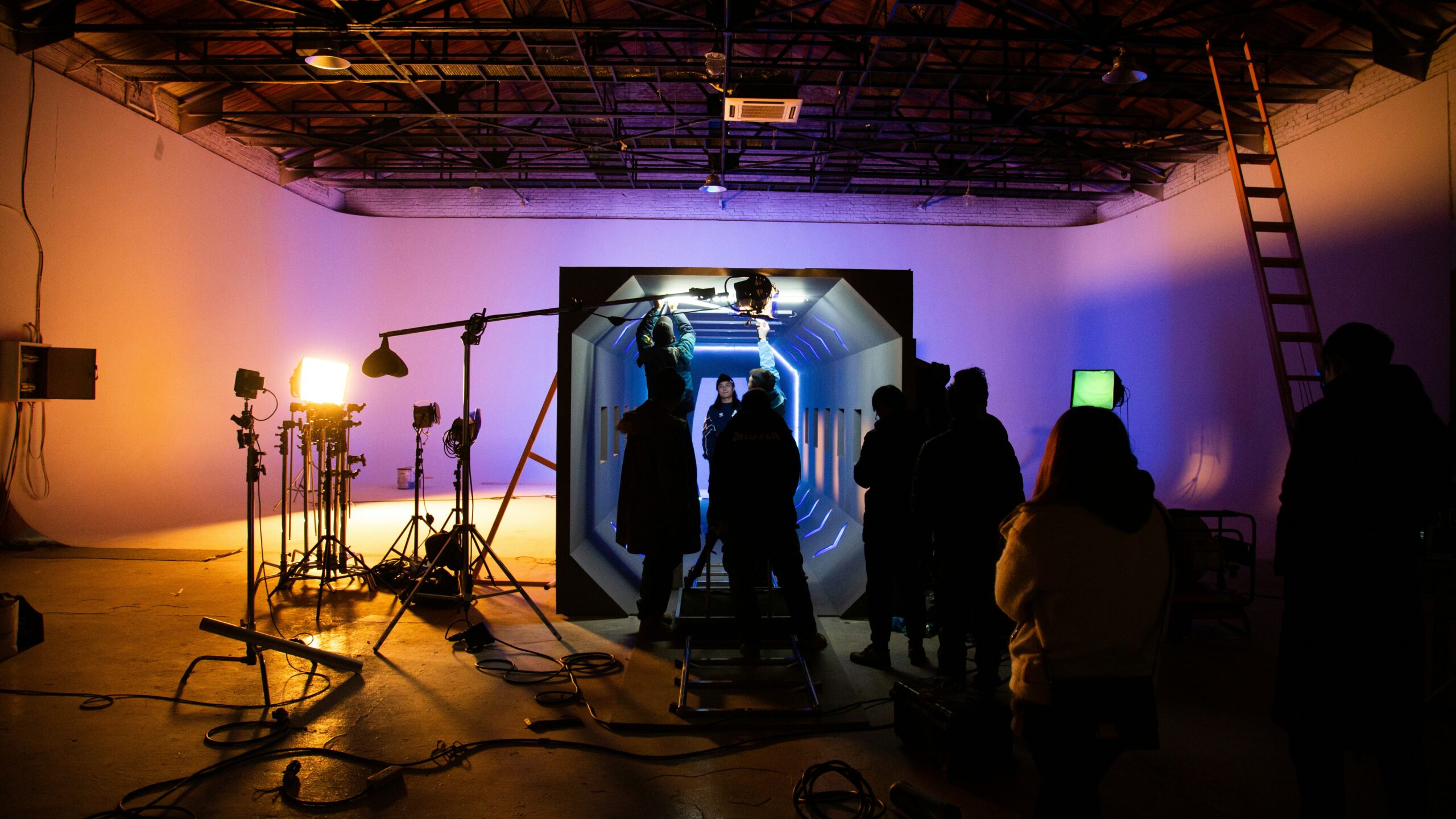In today’s digital marketing, 73% of consumers prefer brands that show an authentic and compelling personality.
Research indicates that a brand’s personality and visual presentation significantly shape and influence customer perception and preferences.
Even one well-executed pose can convey your professionalism, approachability, innovation, or any other brand value to your clients.
As a result, you can strengthen customers’ trust in you and your brand.
With this simple step-by-step guide, you’ll learn the best posing ideas to make your brand shine, whether you are a beginner or not.
You will see:
- Science-backed insights
- Actionable posing strategies
- Behind-the-scenes techniques from top branding photographers
- Real-world examples to dominate visual storytelling
- Unique posing styles with a practical framework
By the end of the article, you will not only have learned how to unlock the power of visual storytelling but also how to make your brand stand out in a crowded market, build trust, and instill confidence in your customers.
So, let's dive in!
1. Understand Your Brand Persona Through Posing
Define Your Brand Voice
First and foremost, you should identify your brand’s personality. This will determine your posing choices, color scheme, and copywriting.
If you want to do this more professionally, I recommend using brand guideline templates to create your own brand style from scratch.
It can be inspiring, fun, or serious, totally up to you. For instance:
The Expert/Authority Brand:
- The power pose: standing tall with your shoulders back, either hands on your hips or folded confidently.
- Eyes locked to the camera.
- Simple and clean background to emphasize professionalism.
The Friendly/Approachable Brand:
- Posing can be done comfortably by leaning against a wall or a piece of furniture.
- Warm and sincere smile. (Don't force it. You can imagine a funny story or memory.)
- For the more intimate shot, you can glance at the camera over the shoulder.
The Innovative/Creative Brand:
- You can choose dynamic, athletic, and powerful poses to show movement.
- Change the perspective and angles, be creative. You don't have to be conventional.
- The background can be an artist's messy workspace, so you can show off some creativity.
Know Your Audience
Ask yourself this question: What does your target audience value?
According to the answer, align your posing with their expectations and style.
I mean, think about it, a corporate law firm’s clients expect a different style than a weight-lifting community. You should also consider:
- Demographics: Younger audiences prefer casual, fun, exciting, and authentic shots, while professional services look for more formal and serious posing.
- Platform Preferences: Let's say you're targeting the LinkedIn audience, then you should consider more polished poses rather than the dynamic poses of Instagram.
- Cultural Considerations: This can be a bit tricky because some gestures or postures can have different meanings across cultures. You should consider this.
2. Use Poses to Show Your Brand’s Values
Highlight Unique Selling Points
Let's agree on this: If you want to showcase your product's features or highlight your difference from your competitors, each pose needs to serve a strategic purpose.
For example, Apple’s minimalistic and clean product shots emphasize simplicity and elegance while highlighting its own style.
Of course, this will vary depending on your brand:
For Product-Based Business:
- Consider capturing your products with action shots, like a gardener mowing the lawn with your lawnmower or a chef cooking with your pan.
(I don't know, use your imagination 😂)
- If your product has unique details or is handmade, you can take photos that show the craftsmanship in action.
This is like watching a chef cook while you wait for your food at a restaurant. This will create an enjoyable experience for your audience.
For Service Providers:
- Capture customer interaction moments like shaking hands or signing a contract with your mock or real customers.
- For demonstrating the process, use behind-the-scenes shots.
- Additionally, if you want to draw attention to the human effort behind the service, use photos that highlight personality.
Evoke Emotions with Your Poses
It’s really interesting, but did you know that studies have shown that we make snap judgments about trustworthiness and competence based solely on body language?
This fact can be your worst enemy, but if you use smart strategies, you can use it to your advantage:
- Increase your approachability with open poses without crossing your arms or keeping your shoulders relaxed.
- To convey engagement and interest, slightly lean forward.
- For confident photos without appearing aggressive, tilt your chin slightly down.
- You can mirror your ideal client’s posture in your pictures. For example, use energetic and dynamic poses for the active audience.
- And of course, a genuine and sincere smile that reaches the eyes. This creates instant harmony.
3. Incorporate Consistency Across Visuals
Creating a Pose Style Guide
To create consistent visual content, you should use a posing style guide that includes standard poses, color schemes, and backdrops.
- Create your brand’s core pose library with 5-10 signature poses, and use them repeatedly—power pose, product demonstration, sincere laugh.
- Make an angle guideline with preferred angles—macro shots for details, or hero shots for empowerment.
- Define expression standards, like the intensity of a smile for different situations.
Example:
“ Leadership Posts: Use a variation of power poses (standing, one hand in pocket, slight smile).
Background: Office environments with solid brand color.
Crop: Medium close-up from waist up.”
Templating for Efficiency
Creating templates for social media images not only saves time but also keeps your brand recognizable.
- Use social media grid systems to alternate between your core poses. With this, you can create a visual rhythm.
- With blog post images, you can standardize your appearance in educational content.
- Use a recognizable email signature pose and headshot across all communications.
4. Dynamic Posing Techniques That Captivate
Incorporating Movement for Authenticity
Often, using static poses can feel stiff and outdated. Therefore, modern branding thrives on movement.
Moreover, showcasing products in use and capturing natural, candid moments can make your brand more relatable and engaging.
- Capture mid-stride walking shots for natural energy.
- Use transition moments to your advantage (The moment between poses often looks most genuine).
- By using continuous shooting mode and moving naturally for 10 to 15 seconds at a time, you can capture the authentic, unique moments between planned poses.
- Be open to showing your work process by using a series of images and action sequences.
Perspective Play for Dramatic Impact
Change your perspective, be creative, and play with different angles (low or high shots) to draw attention.
Additionally, encouraging staff or customers to strike more natural poses and share their unique experiences can greatly increase authenticity and encourage community engagement.
For example, Nike often uses low shots of athletes to boost energy and give powerful, encouraging messages.
- Low angles are often used to make the subject seem more authoritative, perfect for expert positions.
- High angles, on the other hand, can help you create friendly, approachable pictures.
- Dutch slopes, that is, the slightly angled camera, contribute to creativity.
- Extreme close-ups can make details pop or build intimacy.
5. Train Your Team in Brand-Aligned Posing
Basics of Good Posing
Most people can feel awkward posing, but you can educate your team on fundamental posing techniques to help them feel more confident.
You can use these basics to simplify the process:
- Posture correction: Rolling shoulders back and down, and elongating the neck, is the first step of posing.
- Weight shift: Shift your weight onto your back leg and slightly bend your front knee.
- Hand Placement: Give your model things to do with their hands, like touching objects, pockets, or making natural movements.
Because most of the time they won't know what to do with their hands 🙂
- Face Relaxation: Natural smiles and genuine expressions, or maybe slightly parted lips. (Model secret: Put your tongue on the roof of your mouth to prevent stiffness.)
Consider hiring photographers for coaching, because an expert’s eye improves the overall brand appearance, and you won’t have to constantly think about how to pose.
Use Visual Guidelines
You can create short videos, demonstration poses, and cheat sheets to make shooting sessions easy and smooth.
This will give you a quick reference to refer to and can be an invaluable resource for your team.
- Pose cheat sheets are basically a visual reference of approved poses.
- Video tutorials don’t have to be long; even 30-second demos of each basic pose will do.
- Create behind-the-scenes footage and show the setup of your best shots to quickly set up for your shoot.
6. Measure and Adapt Based on Results
Track Engagement Rates
Noticing which poses get the most likes and shares is crucial to shaping your visual strategy.
Use this data to utilize analytics tools to assess engagement rates and refine your approach accordingly.
Be aware that not all poses perform equally. Check the monitor metrics like:
- Social media is a great tool to observe and compare engagement rates across different posing styles.
- Perform website analysis on pages with different images, and track the time-on-page.
- Determine which poses have a higher conversion rate.
Gather Feedback
You can also collect feedback from your clients through surveys or even direct interactions.
Ask them what they liked and what they would like to see more of. This is the quickest way to get insights.
- Which of these images best represents our brand?
- What emotion do you feel when viewing this photo?
You can conduct user testing using tools like Heatmap, so you can see where the eyes are on your images.
And keep in mind, you should stay flexible to keep your brand fresh and aligned with the audience's expectations.
So be prepared to adapt your posing styles. Over time, you may need to shift to more relaxed or professional tones as needed.
In conclusion, your brand’s posing strategy is a powerful communication tool that conveys your brand’s values, makes recognition, and builds emotional connections and trust with your audience.
By implementing these techniques;
- You’ll present a more professional and polished brand image
- Your visual content will resonate with your target audience.
- Your photography will support your business goals.
- You’ll create recognizable branding.
Remember, know your style, stay consistent, and keep poses natural. Use feedback and data to improve constantly because small changes in how you pose can make a big difference.
Now, take these ideas and make your brand stand out!
Check out my previous post here: How to Take Product Photos with Your Phone: A Simple Guide to Get Stunning Results
See you in the next post—xoxo!
Follow me on Pinterest💕




